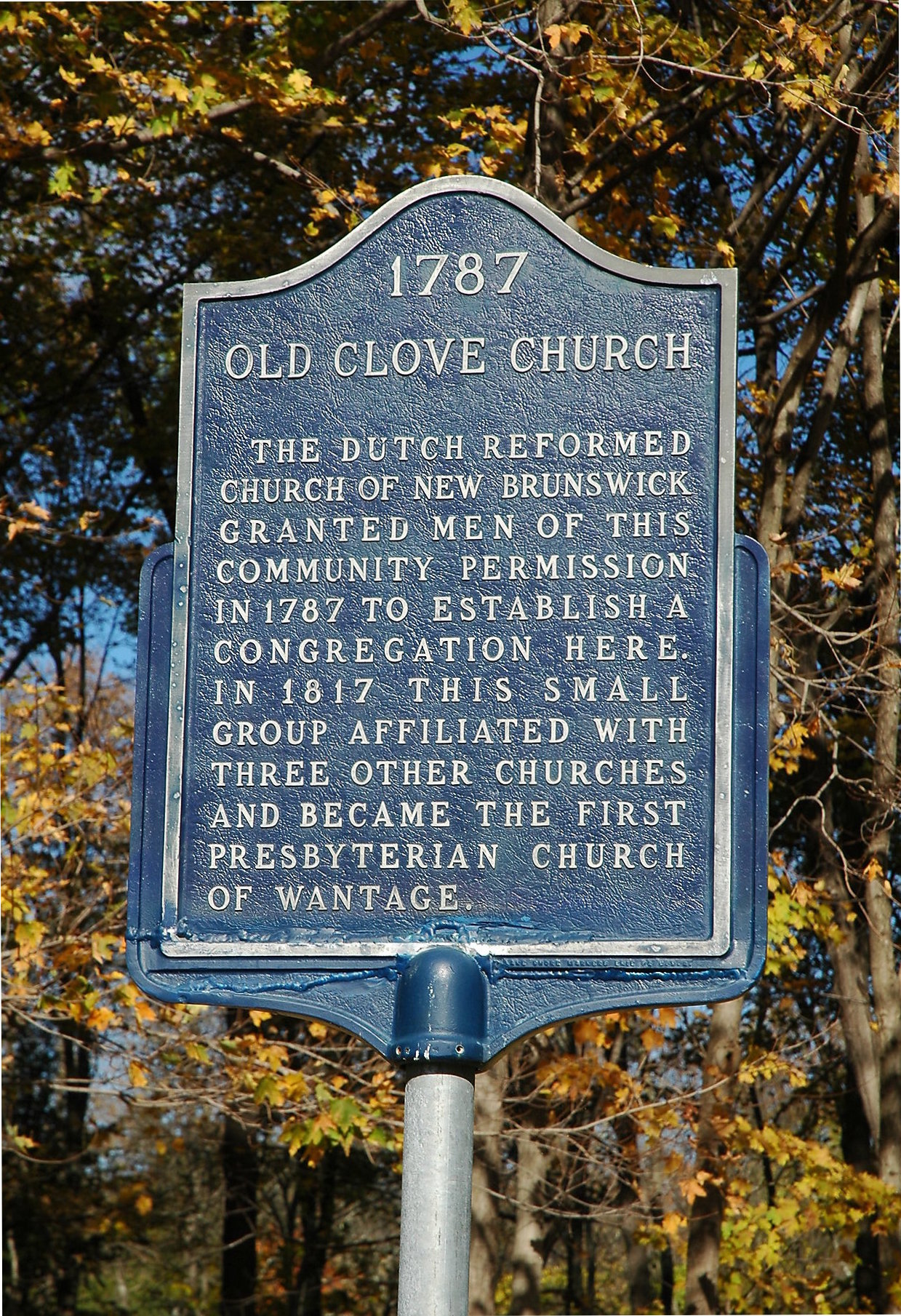 The original congregation of the Old Clove Church was formed in 1787 through the Classis of New Brunswick of the Dutch Reformed Church. Their pastor was the Rev. Elias Van Bunshooten. For a time the congregation met in the barn of Helmos Titsworth until a log meeting house was built just south of the church's present location.
The original congregation of the Old Clove Church was formed in 1787 through the Classis of New Brunswick of the Dutch Reformed Church. Their pastor was the Rev. Elias Van Bunshooten. For a time the congregation met in the barn of Helmos Titsworth until a log meeting house was built just south of the church's present location.
In 1814, Rev. Van Bunshooten gave to the trustees of Queen's College (now Rutgers University) a fund of $17,000, the income from which was to be applied to the education of ministers. This fund still active, continues to educate ministers and is the oldest such endowment in the United States.
After Van Bunshooten's death in 1815, the church members voted to disband. On August 11, 1818 it was organized as a Presbyterian church with 25 members under the Ref. Gershon Williams and entitled the First Presbyterian Church of Wantage.
In 1821, the Rev. Edward Allen was installed as pastor and served until 1830. There were two very successful religious revival meetings held at the church at this time, which added 342 members to the church. The log meeting house was now too small to accommodate everyone and it was torn down. The present church was built in 1829 for $3,300 by Andrew McNish, with much of the labor contributed by members of the congregation.
The building is architecturally unique and is an early example of transitional architecture, combining Greek Revival and Victorian Gothic Styles. The foundation is laid without cement and is made of squared blocks of stone.
Rev. Allen resigned because of ill health and was succeeded by Rev. Peter Kanouse who served from September 27, 1830 until December 29, 1834. Two more revivals were held, and 163 members were added to the church, bringing the membership to 600.
On July 13, 1834, the congregation of Old Clove Church was divided and the Second Presbyterian Church of Wantage in Beemerville was organized with 122 members. Old Clove Church was again divided on May 1, 1839 and the Third Presbyterian Church of Wantage in Deckertown (now Sussex) was organized.
Several Revolutionary War soldiers are counted among the church's early members. Church services were well attended. Horse drawn carriages would pull around the outside of the crowded church and members would listen to the service through the windows.
During the late 1800's, ministers stayed with various families and walked from farm to farm to spread their work. The nearby Old Clove Church has headstones denoting the early church members, and a small section is the final resting place for slaves. Students at Mount Retirement Seminary, a local boarding school, which opened in 1883, attended services at Old Clove Church.
Harvest Home suppers were held on the church lawn under tents. Music was supplied by local musicians. Oil Lanterns were strung across the church grounds to provide light in the evening for suppers.
In 1887, in honor of a 100 year existence of both the Reformed and Presbyterian congregations, the pews were cut down and outlined in black walnut. Large Victorian stoves were placed on both sides and Gothic style apse chandelier was hung and the candle sconces were removed from the pillars where their original positions show plainly.
In the early 1900's the congregation began to decline and from 1914 to 1928, services were held during the summer months by theological students. Since then an annual service has been held with guest minister.
In 1972 the Newton Presbytery wished to dispose of the property and a group of friends and old members raised $7,000 to purchase the building and the land. Today, the church stands much as it did when the 1887 celebration was held. Occasionally the church is used for funerals and many weddings are held.
In June of 1982, the Old Clove Church was placed on the New Jersey and National Registers of Historic Places.